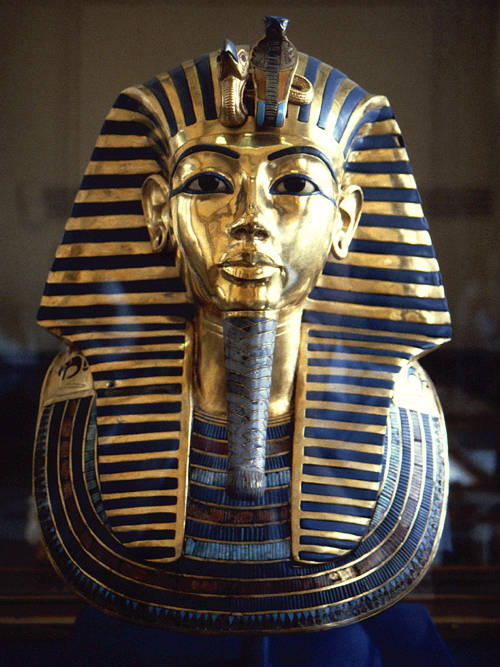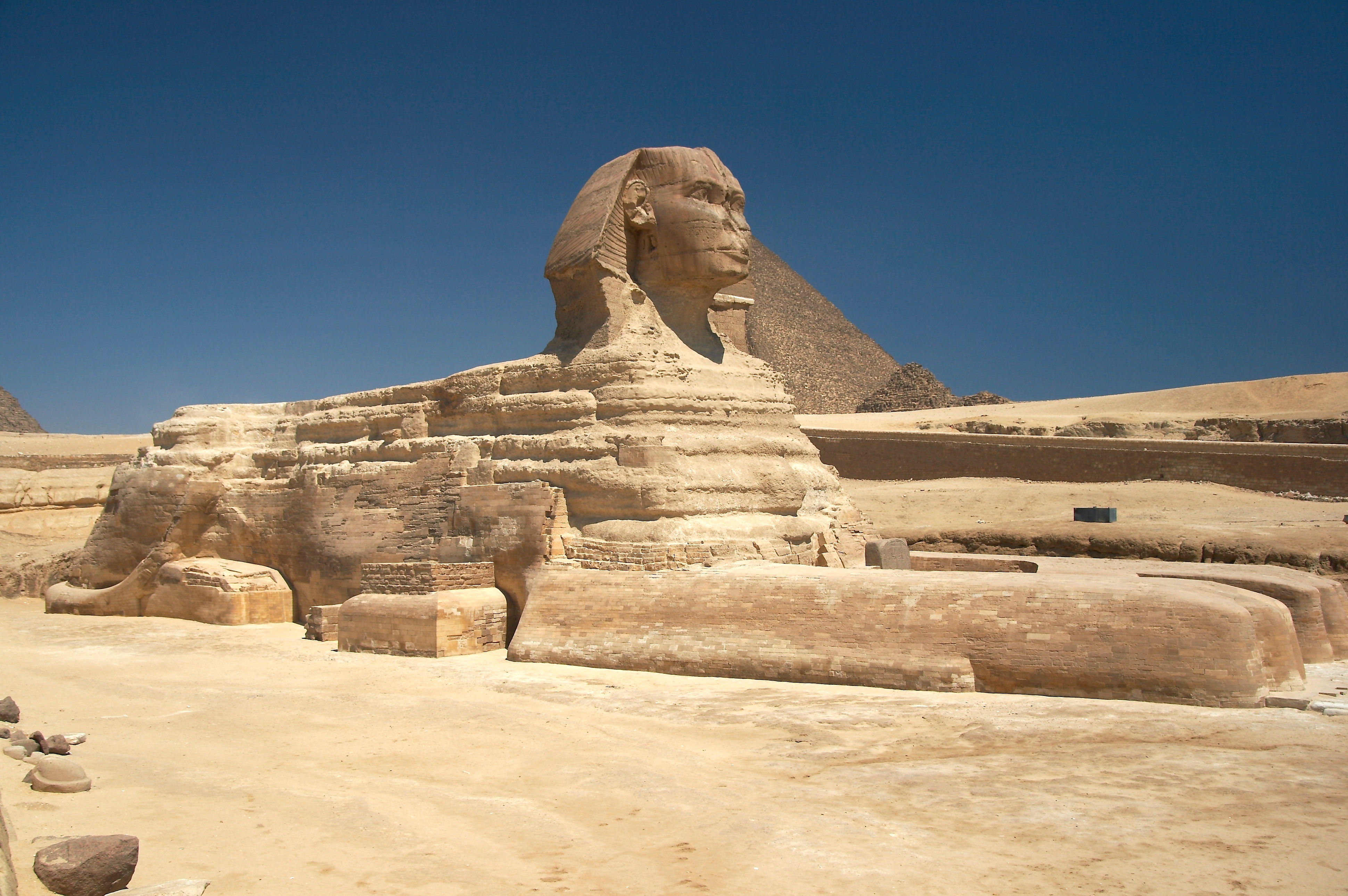
 Egypt 10 Piastres 1998 UNC
Egypt 10 Piastres 1998 UNCFront Design: The Saladin Citadel of Cairo (Muhammad Ali Mosque Citadel)
Back Design: The Great Sphinx and pyramids at Giza, Watermark: The statue of Tutankhamun

Mask of Tutankhamun's mummy, the popular icon for ancient Egypt at The Egyptian Museum.
 The Great Sphinx of Giza, Egypt
The Great Sphinx of Giza, Egypt
The Great Sphinx of Giza is a half-human, half-lion Sphinx statue in Egypt, on the Giza Plateau at the west bank of the Nile River, near modern-day Cairo. The largest monolith statue in the world, it stands 73.5 metres (241 ft) long, 6 m (20 ft) wide, and 20 m (65 ft) high.
The location, part of the Muqattam hill near the center of Cairo, was once famous for its fresh breeze and grand views of the city, and was fortified by the Ayyubid ruler Salah al-Din (Saladin) between 1176 and 1183 AD, to protect it from the Crusaders.
It is sometimes referred to as Mohamed Ali Citadel , because it contains the Mosque of Mohamed Ali (or Muhammad Ali Pasha), which was built between 1828 and 1848, perched on the summit of the citadel. This Ottoman mosque was built in memory of Tusun Pasha, Muhammad Ali's oldest son, who died in 1816.
The citadel stopped being the seat of government when Egypt's ruler, Khedive Ismail, moved to his newly built Abdin Palace in the Ismailiya neighborhood in the 1860s.
There are two other mosques at the Citadel, the 13th/14th c. hypostyle Mosque of al-Nasir Muhammad from the early Bahri Mamluk period, and the 16th c. Mosque of Suleyman Pasha, first of the Citadel's Ottoman-style mosques. The citadel also contains Al-Gawhara Palace, the National Military Museum and the Police Museum.

Cairo Citadel at night
No comments:
Post a Comment